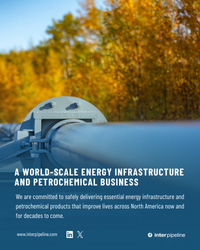Condensates are quirky as heck — everyone’s got his or her own definition of what they are, for one thing — and their very quirkiness has sent condensates on a wild ride during the Shale Era. For example, the U.S. government for years categorized “conde” as a very light crude oil, and the long-standing ban on most crude exports meant you couldn’t export the stuff to anywhere but Canada. Unless, that is, you ran conde through a splitter to make NGLs, naphthas, and kerosene — those are petroleum products and they could (and still can) be exported, no questions asked. Then, as condensate production started soaring, especially in the Eagle Ford, the feds said that if you “processed” conde in special equipment to make it less volatile you could export it — no splitting required. That made the folks who invested in splitters shout in unison, “Huh?!” The roller-coaster for conde didn’t end there. The U.S. soon lifted the ban on all crude exports, and suddenly you didn’t need to process condensate at all to export it. More upheaval ensued. Today, we discuss this peculiar grouping of hydrocarbons.
This blog is based on one of the nearly 40 presentations at RBN’s Fall 2020 School of Energy Virtual last month. All of the videotaped presentations and their slide decks are now available for purchase; click here for more information about School of Energy Encore.
Condensates don’t fit into any neat category. They can be an ultralight crude oil, or an NGL. They can be dark, clear, or in-between. And they can go by any number of names. But there are some commonalities to them as well, such as they are all mixtures of light hydrocarbons and they are all liquids at atmospheric pressure and temperature.
Rather than try to shoe-horn condensates into a tight, one-line definition, it might be best to describe them as a family of products alternatively known as “lease condensate” or “field condensate” or “raw condensate” when produced at the wellhead … OR natural gasoline, pentanes-plus or “plant condensate” when produced at natural gas processing plants … OR “drip gas” when liquids settle in natural gas pipelines … OR some refinery naphthas when they are traded in global markets. The complications don’t end there. Natural gas processing plants produce natural gasoline, but natural gasoline is also called condensate by much of the world, including the Canadian market. That same product is also called pentanes-plus, or C5+, because it has five or more carbon atoms per molecule. And condensates are sometimes called crude oil. In fact, most of the field condensate produced in the U.S. ends up being called crude oil in EIA (Energy Information Administration) production statistics and by many of the companies that produce condensates. (An aside: financial markets like it better when a producer calls it oil, versus calling it condensate, because oil usually gets a better price — even if the condensate itself does not get a better price.)
Join Backstage Pass to Read Full Article










